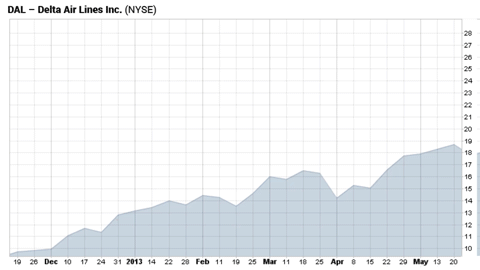Money Talk Investing Strategies in Volatile Markets
Post on: 6 Июнь, 2015 No Comment

Looking just at past weeks wont help you plan.
Many people find investing daunting. Some of us tend to be conservative and inert in our financial strategies. This is particularly true when the stock market is choppy. In the past few years, the market has been particularly volatile and the economy and job situation in the United States, plus escalating world crises, give pause to even the most optimistic person.
Markets have cycles of positive and negative returns. Over the past 60 years, there have been multiple economic contractions that have had negative impacts on stock returns. While we are going through the dips, it seems as if the market will never recover. But after each down period, the market has rebounded.
Put investing in perspective. Look at the big picture when determining your plans for various portions of your portfolio. There are investment opportunities in all types of market environments. Having a sound plan in place, along with some cash to take advantage of opportunities and anomalies in the markets is good financial practice.
With education about financial planning, a good adviser and a sound plan, you can weather the ups and downs of the market with more confidence.
Take into account the following factors as you decide how to invest.
1. The specific uses for your investments and amounts needed require targeted strategies.
For example, the savvy investor has an emergency fund, retirement account and, perhaps, other uses for their investments, like education for their children and grandchildren, savings for vacations or such large expenditures as cars, charitable donations, etc. Each requires a different approach to assure the best return possible.
2. The time frame in which you need money from various baskets.
Over time, volatility lessens. Although short-term returns can vary greatly, in looking at long-term returns historically, overall market volatility has diminished.
For assets needed in the short term, invest in bonds, CDs and other fixed-income instruments. If your need is imminent, keep your money in an interest-bearing bank account.
For longer-term investments — five to 10 years or more — you should consider investing in stocks and other equities as a high percentage of your portfolio mix. The exact percentage should be determined by the type of need, your risk tolerance and the features offered by the investment. For example, some long-term investments — like variable annuities that offer guaranteed yearly increases in account value and returns for income withdrawal — can be invested mainly in stock funds.
3. The risks in investing in bonds and other fixed income securities.
Generally, bonds move in the opposite direction from stocks. But not always.
In a low-interest-rate environment, like our current one, not only are you getting a minimal return on your investment, but you are also at risk of losing a portion of the principal.
How does this happen? The principal value of bonds moves in an inverse direction from the rate of interest paid. If interest rates offered in the marketplace rise, bond principal declines. This is because the investor can buy a new bond with a higher principal value at the same rate of interest. So the interest on this new bond will be greater, as it is based on a higher-priced security.
4. Market timing doesnʼt work.
If you knew when to get out of stocks and other securities before the economy and markets slowed and got back in just before the situation improved, you would be very rich, indeed.
The average investor buys high and sells low. Another way of putting this is that people buy on greed and sell on fear.
In 1987, I was a fundraising consultant working with many affluent people. My knowledge of financial matters was quite minimal. Despite this, there was something in the air that struck me as unusual and even ominous in the financial world. So I moved my retirement assets to a money market fund within my 401(k).
The market went down, down, down and I stayed and stayed and stayed in the money market fund. By the time the market recovered, I had missed the upside.
In 1988, when the market had recovered, I reinvested the money market funds in equity funds. These funds cost approximately the same amount as when I cashed out. It was a wash and I did not profit by my intuition.
And I still have no crystal ball when it comes to the stock market.

You may have heard that if you want to know what the markets will do, watch the average individual investor and do the opposite. But institutional investors control the largest percentage of money in the market. And they, too, are subject to investment decisions based on emotion.
So what are you, the small investor, to do?
To Manage Volatility and Grow Your Nest Egg, Use These Principles for Investing.
You make money when you buy low and sell high. Add to that regular savings and investing in securities, either equities and/or fixed income instruments that compound over very long periods of time and you should have a winning strategy.
What steps should you take to maximize the potential for growth of your portfolio?
- Save and invest regularly.
- Set up an emergency/reserve fund of three to six months expense money, if you have not already done so.
- Educate yourself on finance and investments. Your financial future deserves some of your time so that you can make informed decisions. This is also true when you use a financial professional.
- Consider hiring a professional financial adviser, one who will work with you, your accountant, and attorney (when necessary). Although you definitely should be well-informed about financial matters, financial planning is complex. I assume you are already busy enough with your work and personal life to take on the task of managing your investments on your own.
- Fully fund your corporate or other retirement accounts, including IRAs. Know the benefits, values, and restrictions on these accounts.
- Diversify by investing your portfolio in a mix of securities, like stocks, bonds, mutual funds, Unit Investment Trusts, Real Estate Investment Trusts, etc.
- Review your accounts a minimum of once each year or when your life circumstances change. Semi-annual or quarterly reviews would be an even better practice.
A Further Note:
Buying and holding may work well for a very long-term investor like Warren Buffett. We will assume that you are not in Mr. Buffettʼs category — a billionaire with large cash reserves and little or no need for income from your investments or for the principal.
Selling out your winners after a good return — say 15 percent or more — and investing in other securities can be a good strategy. You will reap the rewards of appreciation of the first investment and not risk losing that gain. Then, you should consider investing the proceeds in a sector and/or specific security that has the potential for growth.
And repeat this strategy until you approach retirement or have need for the money. At that point, you will want to have a conservative asset allocation to preserve what you have, along with some equities (stocks, stock funds, etc.) for growth to help you manage inflation.
We invite you to share your reactions to this article and your experiences in investing. Also, please let us know what topics you would like covered in the coming months.
Jacqueline Darien has been a financial planner for 16 years and received her Certified Financial Planner® designation in 2000. Previously, she was a fundraising consultant and worked on planned giving strategies. She blogs at Rebootyourretirementincomeplan.com.














